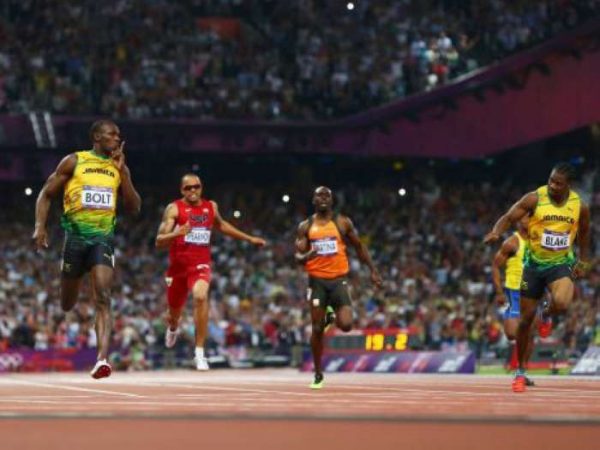200 metres, 10,000 metres and shot put under threat at Olympics
The Zatopek in Melbourne on Thursday night might carry tradition but the 10,000-metre track race that it lends its name could be cut from the Olympics under sweeping changes authorised by the IOC in Europe this week.
Five key events, remarkably including the 200-metre sprint, and the shot put, are in jeopardy after the IOC pushed for the athletics program to be tightened to allow other sports to be added to the Olympics schedule.
The events regarded most at risk under a athletics shake-up are, in order: the 10,000 metres, one of the men’s race walks – most likely the 20-kilometre event – the 200, shot put and triple jump.
Respected athletics administrator Brian Roe, a senior international technical official at the Olympics and world championships, said he was at a meeting of influential thinkers in the sport when the options were put and those five events were all presented as the most obvious choices if there were to be changes.
The 200 is, at first blush, a surprise as sprint events are popular but it is deemed unnecessary or superfluous with the 100 and 400. Swimming is confronting a similar push to consolidate the events it stages, with multiple similar distances in different strokes.
Usain Bolt has won gold in the 200 at the past two Olympics, so it would appear an unusual choice to cull an additional event in which the most marketable athlete in the world competes. But by the time the changes came into effect Bolt would not be racing.
The 10,000 is most vulnerable because it barely features at IAAF track and field events outside the Olympics. Briton Mo Farah won the 10,000 in one of the most memorable performances at the London Olympics but has scarcely competed in the event since.
The shot put is a traditional event but doesn’t capture the public’s imagination. Discus would remain.
The decathlon and heptathlon are understood to be safe, in part because those events would include the shot put and the 200 – in the heptathlon – and so the events would not disappear entirely at the Olympics.
“There was a gathering over dinner in Europe recently of senior athletics people who are very significant in influencing policy matters and I was present,” Roe said. “The IOC clearly has a view to reduce the number of those competing in athletics events and options were raised for how to do that and clearly there was a strong view that the 10,000, 200, one race walk and shot put were the most at risk. The triple jump was the least of those five,” Roe said.
He said the triple jump was considered safer than the other events because over recent times athletes from six continental areas have done well.
“The 10,000 is not really part of the track-and-field calendar any more other than at the Olympics and Worlds so there was an argument against it. The feeling was that the main protagonists are nearly all road runners so if we are to continue with the distance, why not have an event to which millions around the world can directly relate – a 10-kilometre road race,” he said.
“That doesn’t drop an event, but it makes it more relevant – which is a key IOC objective.”





